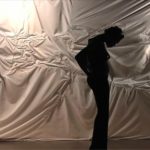IAP Interview: Tamas Veszi, Hungarian Artist and Founder of RadiatorArts
“When I decided to embrace the challenges of running a space in order to create a community, I realized that successful collaboration evolves organically.”
Tamas Veszi is a multimedia artist from Hungary who has built a strong artistic community around RadiatorArts – Radical Mediator for the Arts, a space that nurtures creativity and exchange by providing artist studios and gallery space. With a program that includes international traveling shows, visiting curators, and events, Tamas seeks to promote debates and invigorate cooperativeness around the arts.
NYFA: How did Radiator Gallery start and what’s your philosophy behind the space?
TAMAS VESZI: The idea started many years ago. As an artist in New York, I learned quickly the difficulties artists face showing their work and finding space. When I started Radiator Studios I realized that I had the opportunity to start a curatorial platform and a gallery. I received a proposal for a show before the space was finished. I perfected the space quickly and did not stop since then.
NYFA: How do you approach collaboration?
TV: In 2011, when I decided to embrace the challenges of running a space in order to create a community, I realized that successful collaboration evolves organically. For example, Daniela Kostova got involved with the gallery after our first exhibition. She proposed an exhibition titled Together Again. After the exhibition she curated closed, Daniela joined the gallery as the Director of Curatorial Projects. As an artist that lives and works in Brooklyn, she found the concept of the gallery and the space very exciting. Her input and insight into building the gallery’s programs and working closely with the curators have been crucial to the success of Radiator.
NYFA: You collaborate with many international curators, can you tell us more about how those collaborations usually begin?
TV: Each collaboration starts differently. Sometimes we meet curators or galleries at art fairs. Most important is that we find partners who have the same open mind and realistic point of view regarding the concept, budget, etc. Each curator is expected to work cooperatively, be flexible, self-motivated, and interested in contributing to the ongoing needs of this active multi-arts center. Galleries, artists, and curators from all over are excited to collaborate and exhibit in New York. Being creative and open to mutual ideas is very important. We’ve been lucky to get support from some embassies or institutes from the countries where the artists are coming from. They provide some financial assistance and help with shipping and promotion.
NYFA: Please tell us about some of your most successful shows and events at Radiator.
TV: I am very excited about our upcoming exhibition titled My Country Tis of Thy People, You’re Dying, curated by Erin Joyce. This will be the second part of a Native American exhibition series. This exhibition received a Social Justice Grant from the Shelley and Donald Foundation through NYFA Fiscal Sponsorship. It opens Friday, March 31 and runs until May 26. Other past exhibitions include You are on Indian Land, curated by Erin Joyce. That was the first exhibition and showed extraordinary work. We also had a great lecture on the 8th Floor of the Rubin Foundation at which Sara Reisman interviewed Edgar Heap of Bird. The Left Over Method, from 2013, was an exhibition of a young french artist at Radiator and a young NY artist showing at La Couleuvre (Saint-Ouen, France). The goal of the endeavor was not to repeat the Paris show in New York or vice-versa but to examine what it means today, in an environment of globalization and virtuality, to move from one place to another. What does it mean to move the location of the workshop, to move the place of one’s practice? The questions asked each time were: How does your work change when it changes location? What is most important for you when moving? Is it a necessity? What does the move change in your art practice?
NYFA: I know that you studied jewelry in Florence before coming to New York. In what way does this influence the work that you do today?
TV: Those two years gave me a strong foundation in seeing the connection between different styles in art as well as the importance to examine the past in order to understand and rediscover the present. It helped me understand the basic aesthetic relationships between form and function through transforming a conceptual design into a finished product. I developed an appreciation for materials and their physical qualities, but soon realized restrictions in the function-oriented demands of fine jewelry. Today my work explores the transformation of utilitarian objects from Radiator Gallery’s installations and the leftovers from the studios. The cross-disciplinary notion of “Social Sculpture” is a more fluid and hybrid model that refers back and forth from studio to non-studio practice and leads the artist to a new, honest, and all-encompassing interpretation of social space.
Tamas Veszi is a multimedia artist with an academic background in painting. Veszi has exhibited his work internationally in Canada, Hungary, England, Germany, France, Austria, Italy, and throughout the United States. As RadiatorArts’ director, Veszi has collaborated with the Embassy of Israel, Art Market Budapest, and organized international exchanges with La Couleuvre Art Center in Paris, France, and Bäcker Strasse 4 Gallery in Vienna, Austria. Tamas Veszi lives and works in New York and is currently a participant of Shift EFA Project Space Program.
Learn more about Tamas Veszi and Radiator Gallery.
This interview is part of the ConEdison Immigrant Artist Program Newsletter #91. Subscribe to this free monthly e-mail for artist’s features, opportunities, and events here.
– Interview conducted by Alicia Ehni, Editor of the IAP Newsletter and Program Associate, NYFA Learning
Image: Tamas Veszi, Photo: Tal Foto






